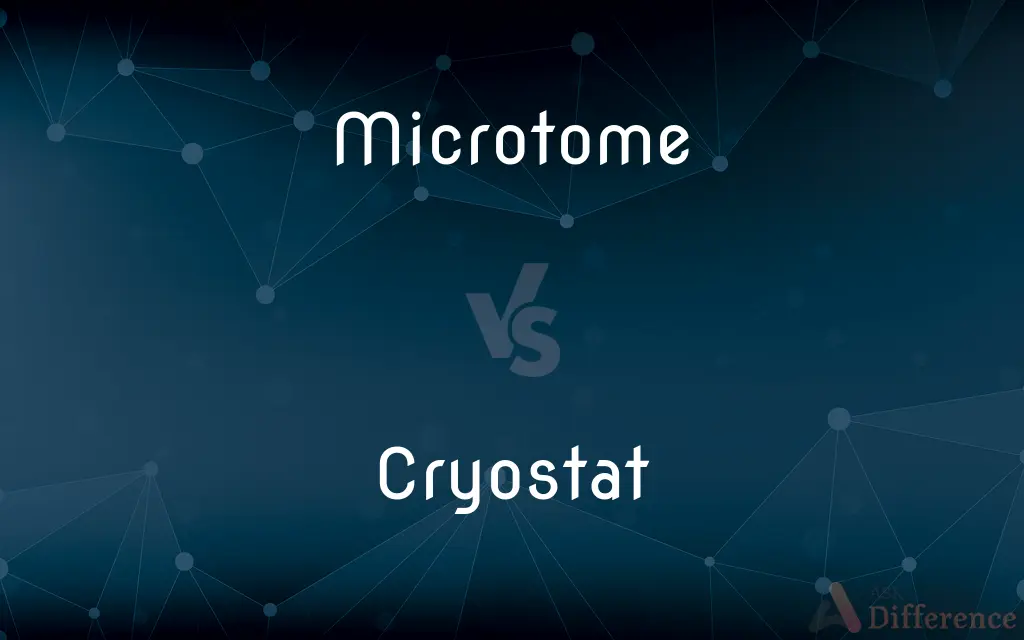Microtome vs. Cryostat — What's the Difference?

Difference Between Microtome and Cryostat
ADVERTISEMENT
Compare with Definitions
Microtome
A microtome (from the Greek mikros, meaning "small", and temnein, meaning "to cut") is a cutting tool used to produce extremely thin slices of material known as sections. Important in science, microtomes are used in microscopy, allowing for the preparation of samples for observation under transmitted light or electron radiation.
Cryostat
A cryostat (from cryo meaning cold and stat meaning stable) is a device used to maintain low cryogenic temperatures of samples or devices mounted within the cryostat. Low temperatures may be maintained within a cryostat by using various refrigeration methods, most commonly using cryogenic fluid bath such as liquid helium.
Microtome
An instrument used to cut a specimen, as of organic tissue, into thin sections for microscopic examination.
Cryostat
An apparatus used to maintain constant low temperature.
Microtome
A special instrument that produces very thin slices of plant and animal tissues, for later examination by light microscope or electron microscope.
ADVERTISEMENT
Cryostat
Any device used to maintain a constant low temperature.
Microtome
To cut into sections using a microtome
Cryostat
(biology) A microtome held at a constant low temperature.
Microtome
An instrument for making very thin sections for microscopical examination.
Cryostat
A thermostat that operates at very low temperatures.
Microtome
Scientific instrument that cuts thin slices of something for microscopic examination
Cryostat
A thermostat that operates at very low temperatures
Share Your Discovery

Previous Comparison
Purpose vs. Overview
Next Comparison
Antique vs. Obsolete














































